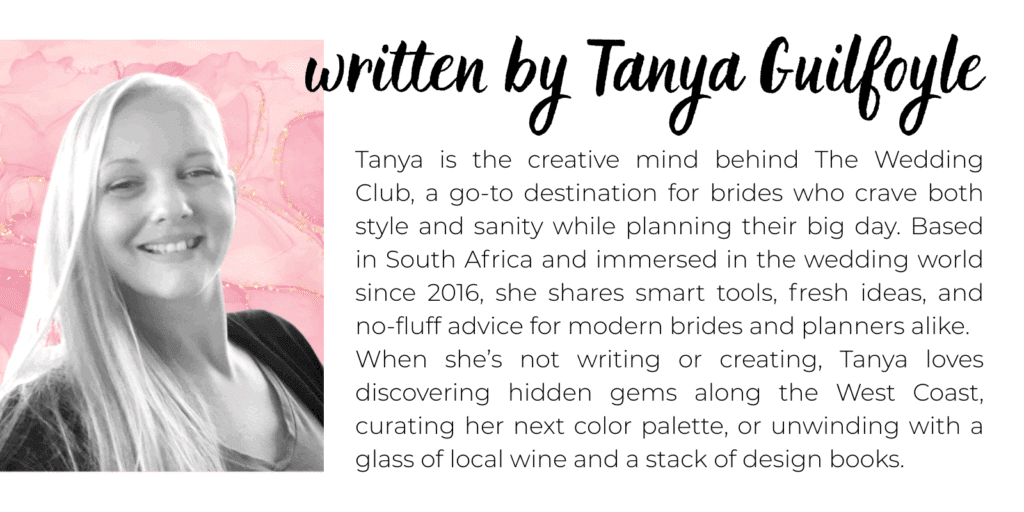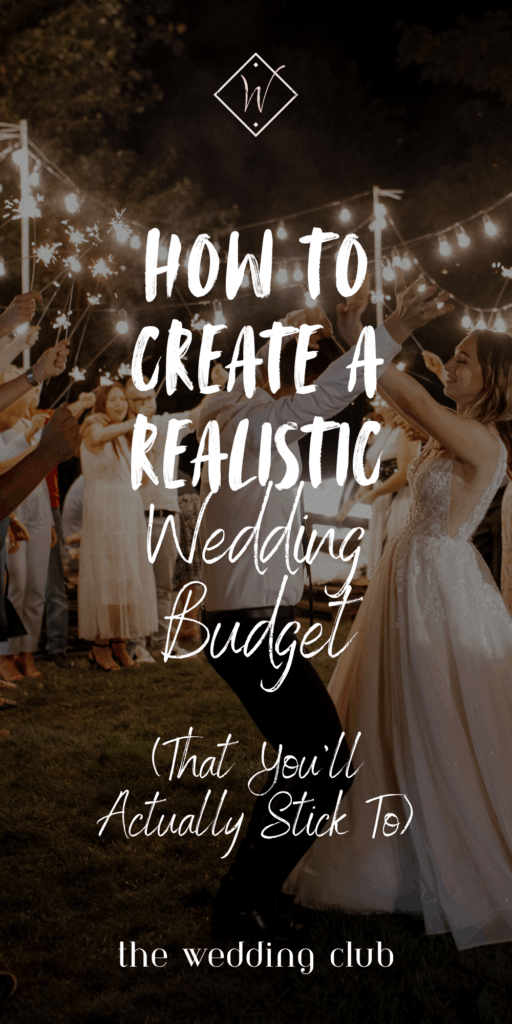Let’s be real for a second—wedding budgeting doesn’t exactly scream “fun.”
You’d probably rather spend time picking flowers or drooling over dress inspo on Pinterest.
But here’s the truth: if you skip this part or just wing it, you’re going to end up stressed, overspent, and possibly arguing over napkin costs (yikes).
The good news? Creating a realistic wedding budget is totally doable—and it doesn’t have to feel overwhelming. You just need a little structure, a few smart tricks, and a tool that helps you stay organized without making your brain explode.
In this guide, I’ll walk you through the exact steps to build a wedding budget you can actually stick to—complete with tips, breakdowns, and a printable wedding budget that makes it all way easier (and yes, prettier too).
So grab a coffee (or something stronger, no judgment), and let’s take the stress out of wedding spending, once and for all.
1. Start With Your Total Budget
Before you book a venue or fall in love with a dress that costs more than your car—pause—and figure out your total wedding budget.
Ask yourself:
- How much do you and your partner feel comfortable spending?
- Is anyone else contributing (parents, grandparents, that generous aunt)?
- Is this money already saved, or are you setting aside monthly amounts?
Once you’ve got a ballpark number, write it down and commit to it. This is your foundation—every decision from here on out will build from this.
💡 Tip: If you’re using our printable wedding budget bundle, the Expense Overview Sheet is the perfect place to map this out. It’s clean, simple, and gives you a big-picture view before diving into the details.
If you’re unsure how much weddings typically cost, try doing a little research based on your location and guest count. Wedding expenses can vary dramatically depending on where you live and what kind of celebration you’re planning.
A backyard ceremony with 30 guests will obviously cost less than a 200-guest event at a luxury venue.
Also—don’t feel pressured to ‘match’ anyone else’s budget. This is *your* wedding, and your budget should reflect your comfort zone, not someone else’s expectations.
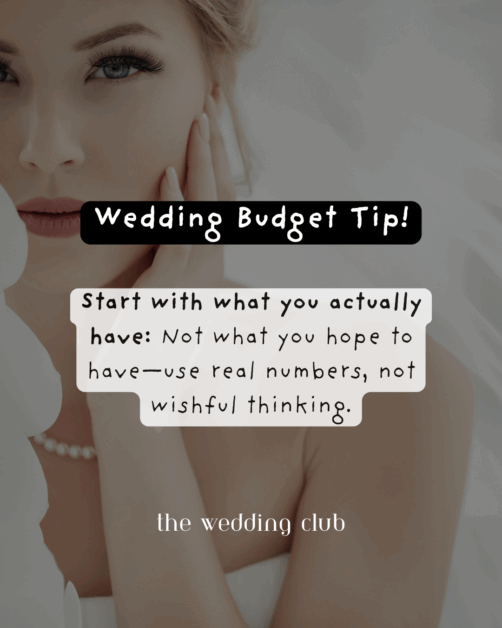
Also Read: How to Plan a Wedding on a Small Budget
2. Break It Down By Category
Here’s where things get real.
It’s so easy to underestimate what weddings actually cost—because there’s just so much involved. Breaking your budget into categories helps you see where your money’s going and makes it way easier to track what you’ve spent (and what you still need to pay for).
Some core categories to include:
- Venue + Rentals
- Catering + Cake
- Attire + Accessories
- Photography + Videography
- Music + Entertainment
- Flowers + Decor
- Stationery + Invites
- Gifts + Favors
- Hair + Makeup
- Marriage License + Officiant
- Honeymoon (if it’s part of your wedding budget)
Using percentages as a guide can help keep things balanced. For example, many couples allocate around 40% of their total budget to the venue and catering, while photography might take up 10–15%, and attire gets around 5–10%. You don’t have to follow these exactly—but they’re a great starting point.
And don’t forget the small-but-important stuff—like your marriage license, transportation, or even your wedding signage. It’s often the tiny line items that get forgotten and then suddenly snowball into budget busters.
The printable wedding budget bundle includes a breakdown sheet for every single category—so you can track expenses item by item and never feel like you’re guessing.
✨ Bonus: It also includes a Supplier Payment Tracker and Payment Calendar, which is perfect for staying on top of due dates and deposits.
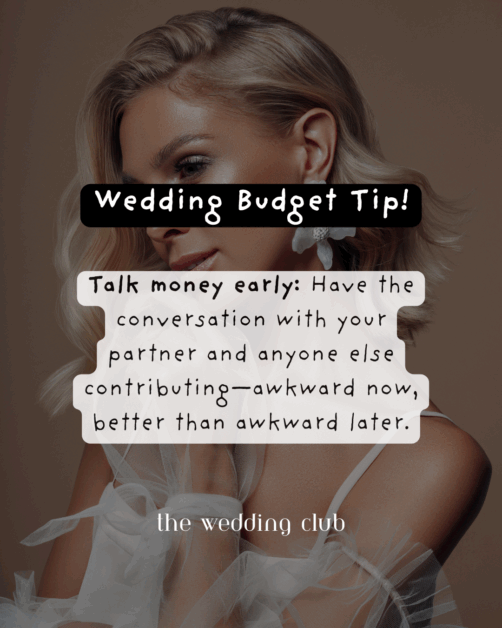
3. Prioritize What Matters Most
Let’s face it—you probably won’t be able to go all-out on every single part of your wedding (unless you’ve got an unlimited budget, in which case… jealous). So this is where you sit down with your partner and figure out your top priorities.
Ask yourselves:
- What’s non-negotiable?
- What do we care about most?
- What are we okay keeping simple?
Maybe you’re all about the food and want to splurge on a top-tier caterer. Or maybe your dream is epic florals and a photographer who captures every detail. Either way—knowing what matters most helps you allocate your budget intentionally instead of evenly (or randomly).
Once you’ve identified your top 3 priorities, give yourself permission to spend more in those areas—and scale back on the rest. Not a big fan of cake? Opt for a smaller one or even a dessert bar. Don’t care about videography? Skip it and invest more in photos instead.
Having these priorities in writing will also help when family members (lovingly) suggest spending on things you’re not too fussed about. You can kindly say, ‘That’s not really a priority for us,’ and move on.
📝 Tip: Use the Standard Budget Worksheet in the printable bundle to note your priorities and adjust your percentages accordingly. It’s a great way to make sure the things that matter most get funded first.
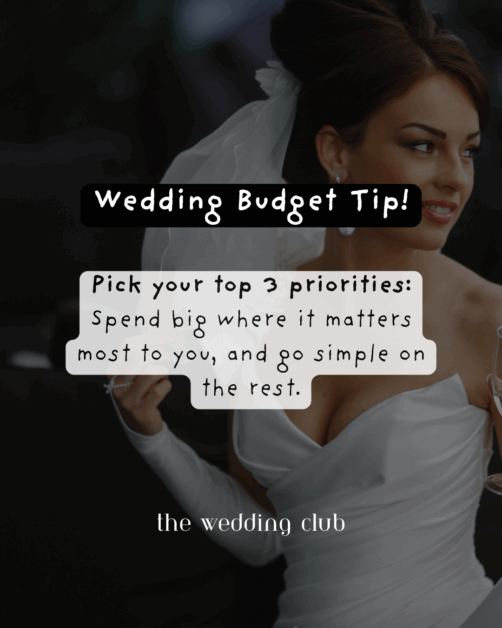
Also Read: Why Most Couples Overspend on their Wedding Budget – and how to avoid it!
4. Get Real About Hidden & Forgotten Costs
Here’s a truth bomb: it’s not the big stuff that usually blows your budget—it’s the little things you didn’t even think about.
I’m talking about:
- Tips and service fees
- Postage for invitations
- Dress alterations
- Beauty trials
- Vendor meals
- Delivery/setup charges
- Late fees, taxes, emergency runs to the store…
They add up so fast—and if you’re not ready for them, they can throw your whole budget off track.
That’s why I always recommend building in a little buffer (around 5–10% of your total budget) just for unexpected stuff.
One of the easiest ways to stay ahead of surprise costs is to *overestimate* your expenses slightly. For example, if a vendor quote says $350, round it up to $400 in your budget—just in case.
Also, don’t forget about costs after the wedding, like thank-you cards, album printing, or dress preservation. Planning for these now saves you the stress later.
💡 BTW: The printable wedding budget bundle includes a full 3-page list of 54 hidden wedding costs so you’re not caught off guard. You can literally go through it and highlight the ones that apply to your wedding. It’s a game-changer.
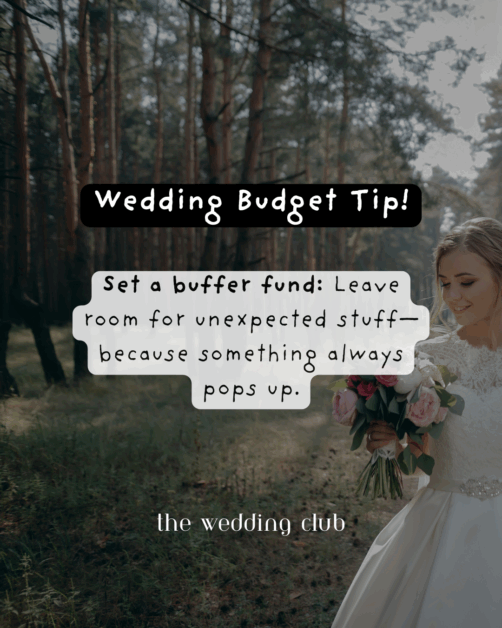
Also Read: 15 Wedding expenses that you forgot to budget for
5. Track As You Go (Seriously!)
If you only remember one thing from this post—let it be this: track your spending as you go.
It’s so tempting to just guess, round numbers up in your head, or keep receipts in your purse until “you have time.” But wedding expenses pile up quick, and before you know it… you’ve spent way more than planned.
Here’s what helps:
- Record every quote, payment, and deposit
- Update your totals as you go (not 3 weeks later)
- Know what you’ve paid vs. what’s still due
- Track who you’ve already tipped or thanked
The printable budget includes:
- An Expense Record Overview
- A Supplier Record Sheet
- A Payment Calendar (to avoid surprise due dates)
- And a “Who’s Paying for What?” worksheet if multiple people are helping cover costs
✨ Pro tip: Keep it all printed and in a folder. There’s something satisfying about filling it in by hand (and not having to dig through email threads when you need a number).
Next: Consistency is key. Make it a weekly habit to check in on your spending. Set aside 15 minutes every Sunday to update your budget sheets, note any new quotes or invoices, and make sure you’re not falling behind on payments.
And yes—it’s totally okay to highlight, scribble, and write notes in your planner. It’s meant to be used, not just looked at!
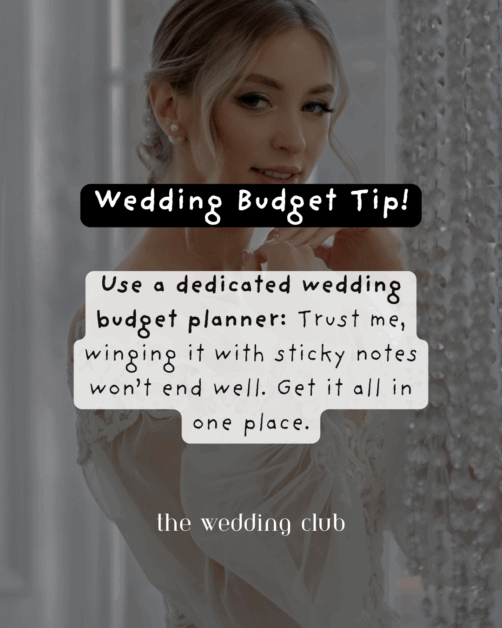
6. Be Flexible (Because Things Will Change)
Let’s be real—no matter how perfect your plan is, something will change. A vendor might quote higher than expected. Or you fall in love with a dress that’s $300 over budget (been there). Or, hey, maybe your guest list shrinks and you save a little—amazing!
Either way, give yourself some room to pivot.
Being flexible doesn’t mean blowing your budget—it means adjusting smartly. If you splurge in one category, you can tighten another. The goal is to stay balanced, not perfect.
That’s why having a clear budget tracker is so helpful—you can see everything in one place and shift things around without losing control.
📝 With the printable planner, you’re not locked into anything rigid. It’s built for real couples planning real weddings—not Pinterest dreams with endless budgets. You can write, adjust, move things around, and track changes as they happen.
For example, if your venue ends up costing $800 more than planned, look at your decor or entertainment categories and see if there’s wiggle room there. Being proactive about these shifts helps you avoid a panic spiral later.
Your budget should evolve *with* your planning, not work against it. That’s why having an editable or writable format (like your printed PDF) is so helpful—it lets you adapt as needed.
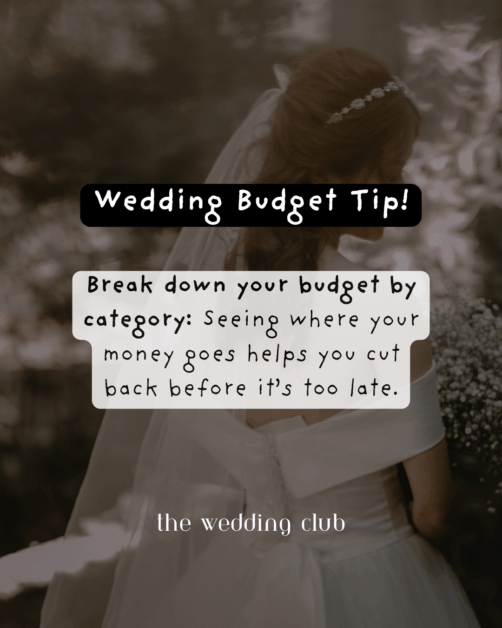
Also Read: How to create a wedding venue budget
7. Save Where You Can (But Don’t Go Crazy)
Let’s talk savings—because yes, there are tons of ways to cut costs without cutting the magic.
Here are a few realistic money-saving swaps:
- Invites: Go digital or do a mix (printed for family, digital for friends)
- Flowers: Use seasonal blooms or greenery-heavy arrangements
- Favors: Make them yourself or skip them altogether (no one will notice, promise)
- Dress shopping: Try off-the-rack or trunk shows for major discounts
- Guest list: Fewer people = less food, fewer rentals, and a smaller venue
💡 Just don’t fall into the trap of “DIY everything” if it’s going to make you stressed or exhausted. Sometimes hiring a pro saves more than just money—it saves your sanity.
✨ Bonus: The printable wedding budget includes a Standard Budget Worksheet where you can outline potential swaps and savings. It’s super helpful when you’re trying to decide what’s worth spending on—and what’s just fluff.
Another easy save? Rentals! Consider borrowing items like vases, candle holders, or signage from friends who’ve recently tied the knot. Facebook groups and local wedding resale communities are gold mines for gently used wedding décor.
Just be careful not to let saving money turn into a full-time DIY project that leaves you stressed and exhausted. If it’s going to take 12 hours and a glue gun meltdown… it’s probably not worth it.
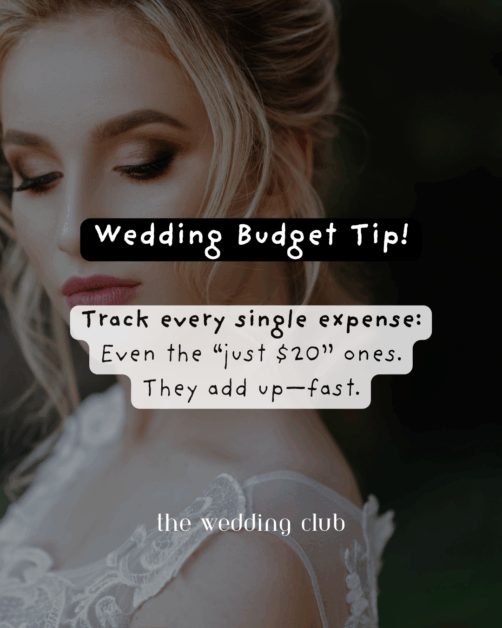
8. Use a Planner That Keeps You Organized
Look, wedding planning is a lot. And if you’re trying to keep track of every expense, payment date, and “did we tip the florist?” moment on random sticky notes… it’s going to get messy fast.
Unlike spreadsheets (that somehow always break the moment you touch them), a printable budget lets you physically flip through your wedding finances—no tabs, formulas, or Wi-Fi required.
Plus, it gives you that satisfying sense of progress. There’s nothing quite like crossing off a paid invoice or seeing your entire payment calendar neatly filled out.
That’s where a good old-fashioned printable wedding budget planner becomes your new BFF.
The one featured throughout this post (👋 hi!) includes:
- 30 pages of practical, no-fluff planning
- A4 and US Letter sizes for easy printing
- Dedicated pages for each budget category
- Payment calendars to help you stay ahead of due dates
- Worksheets for tracking who’s paying for what
- A 3-page list of hidden costs so you don’t get blindsided
Whether you’re a checklist queen or someone who just wants to feel like they finally have it together, this planner’s here to help. No complicated spreadsheets, no app signups—just print it out and start where you are.
💡 Real talk: staying on budget isn’t just about numbers. It’s about peace of mind. And this planner gives you exactly that.
Also Read: How to Organize a Micro Wedding on a Budget
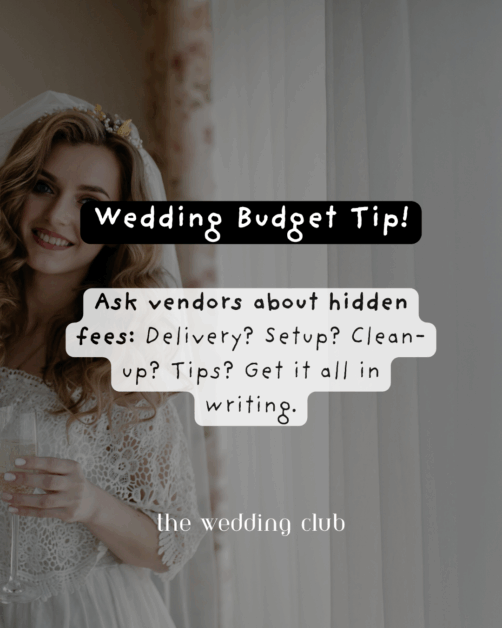
At the end of the day, wedding budgeting isn’t about being strict or cutting all the fun—it’s about giving yourself the freedom to plan confidently without constantly wondering, “Wait… can we afford that?”
When you know your numbers, you make better choices. You can splurge on the things that matter most, save where it makes sense, and avoid that last-minute panic that sneaks in when things aren’t tracked.
And the best part? You don’t have to figure it all out on your own.
If you’re ready to keep things organized, stay on track, and actually enjoy planning this wedding, the Printable Wedding Budget is there to guide you every step of the way.
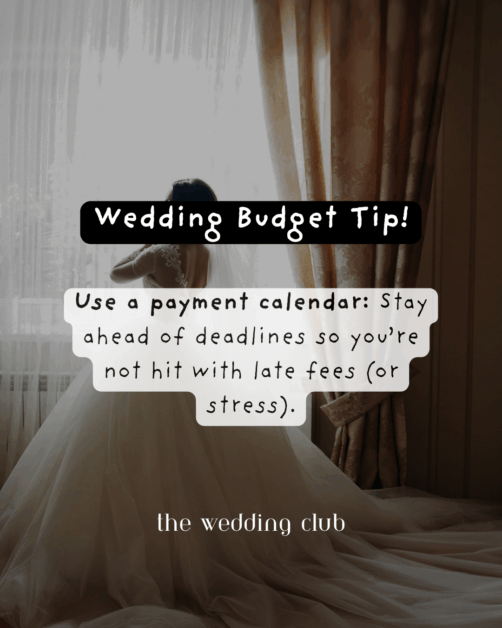
🛒 Grab your 30-page printable wedding budget bundle here
It’s simple, structured, and made for real brides who just want to plan smart—and stay sane.
You’ve got this. 💍✨
